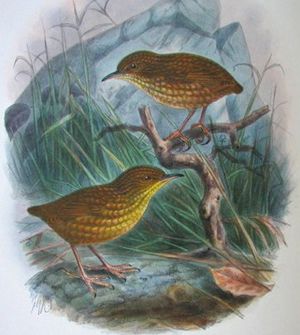Cats in New Zealand facts for kids

Cats are very popular pets in New Zealand. However, sometimes owning cats becomes a topic of debate, especially when it comes to protecting New Zealand's special wildlife. This is because wild cats, called feral cats, can hunt and harm endangered animals like birds and lizards.
Contents
Pet Cats in New Zealand
Domestic cats (Felis catus) first came to New Zealand on Captain James Cook's ship, the HMS Endeavour, in the mid-1700s. More cats arrived with European settlers about 100 years later. In 2011, there were about 1.4 million pet cats in New Zealand. Almost half of all homes had at least one cat!
Because cats can hunt New Zealand's native wildlife, owning them is sometimes a tricky subject. To help protect nature, some new housing areas have been set up as "cat-free zones." This means people living there agree not to have cats. For example, in 1996, a cat-free area was created at Waihi Beach. This was done to protect wildlife in a nearby salt marsh.
In 2012, the Zealandia wildlife sanctuary asked cat owners to consider not getting a new cat when their old one passed away. This was a way to slowly reduce the number of cats. In 2013, a well-known economist named Gareth Morgan suggested that cats should be removed from New Zealand entirely. He even started a website called "Cats To Go." Some people who work to protect nature supported his idea.
It's true that cats can help control rodents, which also hunt native wildlife. So, cats can sometimes play a helpful role. However, experts suggest being extra careful with cats near natural areas or on the edges of cities to protect vulnerable species.
Cats can also carry a disease called toxoplasmosis. This disease can spread to humans through cat poop. Studies in Auckland showed that people with this illness often felt very tired, had headaches, and found it hard to concentrate.
Wild Cats: A Threat to Wildlife
| Island | Year Completed |
Notes |
|---|---|---|
| Cuvier Island | 1964 | |
| Herekopare | 1970 | |
| Kapiti Island | 1934 | Now a special nature reserve |
| Little Barrier Island | 1980 | Now a special nature reserve |
| Motuihe | 1978–1979 | |
| Stephens Island | 1925 | Cats caused a native bird to disappear |
| Tiritiri Matangi Island | 1970s | Now an open sanctuary |
Before people arrived, New Zealand only had two types of bats as land mammals. Birds and even insects filled the roles that mammals usually play in other countries. When new mammals, like cats, were brought to New Zealand, they became invasive species. This means they spread quickly and harmed the native wildlife that wasn't used to predators.
It's believed that feral cats have caused six native bird species to become extinct. They have also caused over 70 local types of birds and lizards to disappear. The famous Lyall's wren is an example of a bird that became extinct because of cats. While some stories blame just one lighthouse keeper's cat, it's more likely that a whole population of cats caused the extinction after a pregnant cat arrived on the island in 1894.
Wild cats have caused problems on other islands too. For example, it was thought that cats would have caused the extinction of the kakapo on Stewart Island / Rakiura if these rare birds hadn't been moved to safer islands. After cats were removed from Little Barrier Island, the local bird numbers grew, and North Island saddlebacks were successfully brought back.
Feral cats are the biggest threat to the critically endangered black stilt, a very rare bird. In 2010, only about 85 of these birds were left. When rabbit numbers dropped in an area called the Mackenzie Basin, wild cats started hunting native animals, including the black stilt, instead of rabbits. The Department of Conservation started a program to trap cats and other predators to protect the black stilt.
Cats also affect other animals. In 2010, the Department of Conservation found that a wild cat had killed over 100 endangered New Zealand short-tailed bats in just seven days near Mount Ruapehu.
In 2020, the Hamilton City Council started a special fund to help spay or neuter wild cats in the city and find them homes. This helps control the number of stray cats.
Mystery Big Cat Sightings
Since the late 1990s, people have reported seeing very large, mysterious cats in different parts of New Zealand. These "phantom cats" have been reported in both the North and South Islands. Some people have even claimed to see panthers near Ashburton. However, searches by the Ministry of Agriculture and Forestry in 2003 found no real proof of these big cats.
Rules and Laws for Cats
The Animal Welfare Act 1999 and the Animal Welfare (Companion Cats) Code of Welfare 2007 are laws that help make sure cats are treated well. For biosecurity reasons (to prevent diseases from entering the country), cats must have tests and treatments before they can be brought into New Zealand. It is also against the law to abandon a cat.
Organisations Helping Cats
Many groups in New Zealand work to help cats and manage cat breeding. The Royal New Zealand Society for the Prevention of Cruelty to Animals (RSPCA) was started in 1882 and has many branches across the country. Cats Unloved is a group in Christchurch that helps cats. Sometimes, they have to humanely put down wild or very sick cats, or those that cannot be trained to live in a home. This is a difficult but sometimes necessary step to deal with the large number of stray cats. There are also several Cats Protection League groups around the country.
New Zealand Cat Fancy is an organisation that oversees many cat clubs, and CATZ Inc is a registry for cats in New Zealand.

